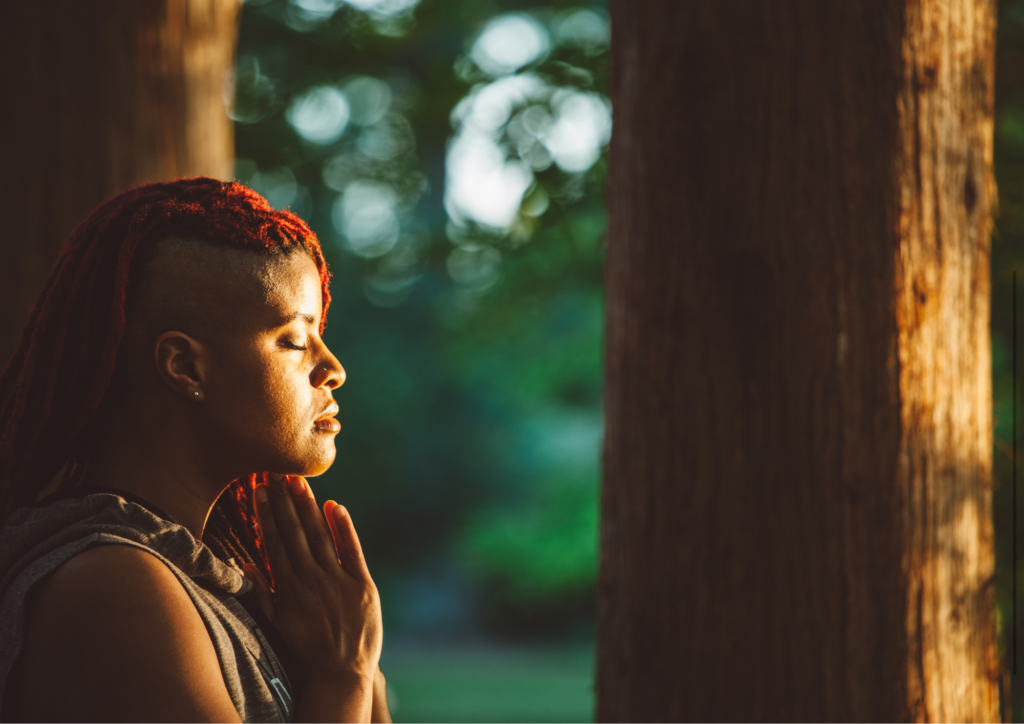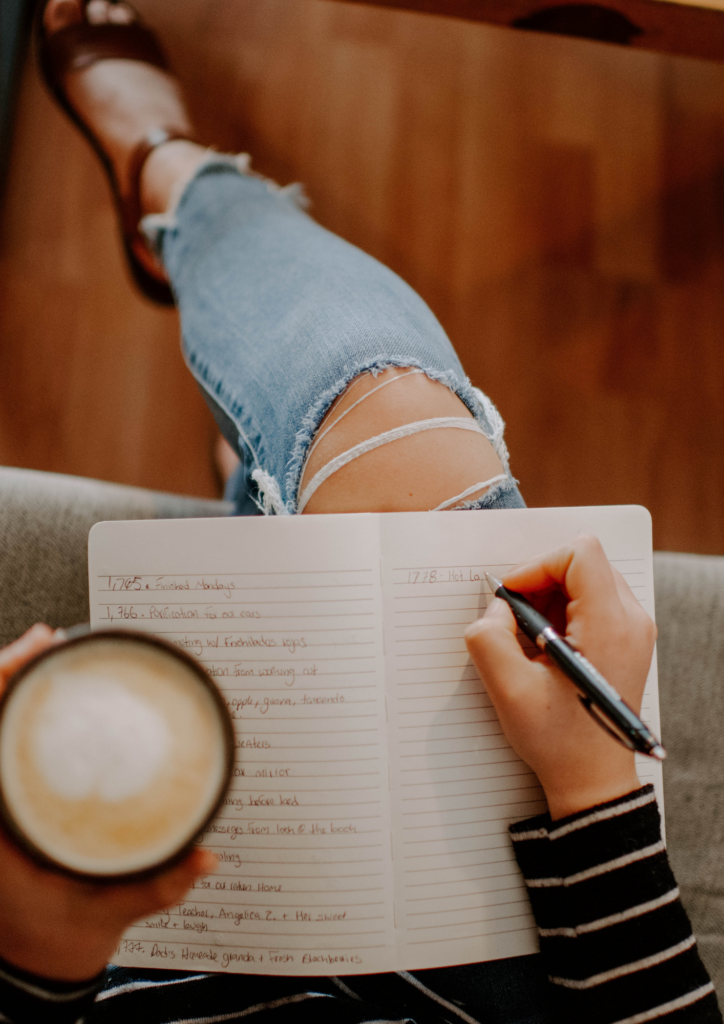To let go requires an amazing amount of courage. Letting go has never been easy for me. For years, I held onto my worries like a lifeline, convinced that if I just kept them close enough, I’d stay in control. I thought that worrying would somehow protect me, as if keeping a tight mental grip on everything would prevent bad things from happening. My mind was constantly racing, spiraling through what-ifs and fears, and I believed that if I stopped worrying, I’d forget something important, or worse—everything would fall apart. But deep down, I knew the truth: All worrying ever did was leave me feeling exhausted, hopeless, and frozen.
The idea of letting go felt like a betrayal of everything I cared about. It felt like I was giving up on protecting my loved ones or neglecting my responsibilities. But the endless loop of anxiety was draining me, and I knew something had to change. That’s when I began my journey with meditation and mindfulness. What I didn’t expect was how transformative this practice would be. Meditation taught me that letting go doesn’t mean forgetting what matters or abandoning your commitments. Instead, it means creating space within yourself—space for peace, for clarity, and for your mind to rest.
One of my most profound experiences with meditation happened during a 3-day water fast. Desperate for some stillness away from the noise of my home and the nearby construction, I drove to a park, hoping for a quiet place to meditate. But, as life would have it, landscapers were working with blowers and mowers everywhere. Frustrated, I almost gave up, but something deep inside whispered, Just sit. So I did. I closed my eyes, focused on the rise and fall of my breath, and tried to let the chaotic noise become part of my experience.
That moment changed everything for me. I realized that meditation and letting go don’t require perfect conditions. Stillness isn’t about what’s happening outside—it’s about finding a sense of peace within, even in the middle of chaos. And in that stillness, I faced my deepest worries: my fears for my children, the pain of past mistakes, and the insecurities that kept me up at night. I named each one, and as I did, something miraculous happened. Naming those fears loosened their grip on me, and for the first time, I felt lighter, as if I’d created space for something better.

The Power of Naming Your Fears
One of the most transformative lessons I’ve learned through meditation is the power of naming your fears. There’s something almost magical about giving a name to what’s been silently gnawing at you, something that makes these hidden worries lose some of their control over your life. When you don’t name your fears, they’re like shadows lurking in the corners of your mind, feeding off your energy, distracting you, disempowering you, and keeping you in a constant state of tension.
When my worries went unnamed, they felt like they had a life of their own. They were like invisible strings, pulling me in a dozen different directions, and leaving me anxious and unfocused. It was as if each fear had taken up residence in my mind, whispering doubts and worst-case scenarios. They distracted me from being present with my kids, stole the joy from moments that should have felt light, and kept me up at night, heart pounding with anxiety.
For example, I had fears for my children that haunted me: What if my son never finds his path or fails to pursue his dreams? What if my daughter falls into a crowd that introduces her to dangerous choices, like drugs? These worries played on a loop, controlling my thoughts and keeping me on high alert. Then there were fears tied to my past mistakes and insecurities, like the guilt I carried from hurting my husband or the fear that I’d never make my business a success. Each one was like a relentless whisper, always there, always draining my energy.
When you let these fears run wild in your mind, they become overwhelming, suffocating, and disempowering. They can make you feel small, like a puppet whose strings are being pulled by the anxieties you never gave a name to. But the act of naming them—saying them out loud or writing them down—brings them into the light. It’s like shining a spotlight on the monsters hiding in the dark, and when you do, they lose some of their power.
Naming your fears brings awareness, and with awareness comes choice. You get to decide how to respond. You get to reclaim your power, because now you’re dealing with something tangible, not just a vague sense of dread. When I finally named my worries, I felt a sense of freedom I never knew was possible. It was as if these hidden forces no longer controlled me, and for the first time, I could breathe.
The simple act of naming your fears doesn’t make them vanish, but it starts to loosen their grip. You’re no longer running from shadows; you’re facing what’s been lurking inside and taking back control. Awareness shines a light on the darkness, and with each breath, you create space for peace, clarity, and the strength to move forward.
Letting Go is a Continuous Journey

Letting go is not a one-time event; it’s a continuous journey, a practice we return to again and again. Each day brings new worries, old fears that resurface, and unexpected situations that challenge our sense of control. And that’s okay. The truth is, we are human, and our minds are wired to try and keep us safe. But when we hold on too tightly, when we let our worries run the show, we end up living in a constant state of tension, unable to fully experience the present moment.
The act of letting go requires patience, self-compassion, and the understanding that it’s a process. Some days, letting go feels light and easy, like exhaling a deep breath after holding it in for too long. Other days, it feels like an uphill climb, requiring every ounce of courage you have. But with each release, with each intentional moment of loosening your grip, you make space for something more beautiful to enter—whether it’s a sense of peace, clarity, or the realization that you can handle life’s uncertainties.
And here’s the thing: letting go isn’t about erasing your worries or pretending they don’t exist. It’s about acknowledging them, feeling their presence, and then choosing to release their hold on you. It’s about trusting in the unfolding of life, even when the path feels uncertain. The more you practice, the more you’ll notice how letting go doesn’t leave you empty. Instead, it fills you with a sense of freedom and lightness.
So, how do we begin this practice of letting go, especially when life feels chaotic and our worries are loud and insistent? We start with small, intentional steps. Meditation and mindfulness offer us a way to find stillness within the storm, a way to gently guide ourselves back to center. Even when our environment isn’t perfect, we can create moments of peace within.
I’d like to share a simple yet powerful guided meditation to help you experience the courage of letting go, just as I did that day in my car when I found stillness amidst the noise.
Guided Meditation for Letting Go
Step 1: Find Your Space
Find a quiet place, or if your surroundings are noisy, sit wherever you are. Remember, letting go doesn’t require perfect conditions. Close your eyes and take a deep breath, focusing on the rise and fall of your stomach. Allow yourself to be present, knowing that stillness begins within.
Step 2: Identify What You’re Holding On To
Ask yourself, What am I holding onto right now? Let your worries and fears come to the surface. Don’t judge them or push them away—just observe. You might even write them down to give them form.
- Are you worried about your family, your career, your health?
- What thoughts have been circling in your mind, draining your energy?
Step 3: Acknowledge and Name Your Fears
Take a moment to sit with these worries. Notice how it feels to name them, to bring them into the light. Each worry you name loses a bit of its power like a shadow shrinking under the sun. Breathe into this awareness, and let the grip of fear begin to loosen.
Step 4: Release with Your Breath
When you’re ready, take a deep inhale. Imagine gathering all your worries with this breath, and as you exhale, picture them dissolving into the air. Feel the weight lifting off you. With each release, notice how you’re creating space for peace, for clarity, for the present moment.
Step 5: Reflect on the Experience
Take a moment to reflect on how you feel now. Does letting go bring relief, or does it reveal new layers of emotion? Whatever comes up, allow yourself to be with it, knowing that each time you practice, the process becomes lighter and more natural.
After releasing your worries, take a moment to reflect. How do you feel now? Has any new clarity or insight come up? What space have you created within yourself?
As you continue your journey of letting go, reflection can be a powerful tool for deepening your practice. Journaling helps you make sense of what you’ve experienced and gives you the space to explore your thoughts and emotions further. These prompts are designed to guide you in understanding and releasing your worries with greater intention.

Journal Prompts for Letting Go
What’s one small worry you can commit to letting go of today? How do you imagine this will change the way you move through your day?
What are the worries that have been consuming your thoughts lately? How do they impact your daily life and energy?
How does the idea of letting go make you feel? Does it bring relief or fear? Why do you think that is?
After releasing your worries, what new insights or feelings come to the surface? What possibilities feel more accessible to you now?

Final Reflection: The Gift of Letting Go
Letting go is one of the most courageous acts of self-love. It’s about choosing to release the worries and fears that have weighed you down, the ones that keep you up at night or leave you feeling frozen in place. Letting go doesn’t mean you’re dismissing what matters most to you. Instead, it means you’re creating space for something better—space for clarity, for peace, and for the possibility of solutions that come from a place of love rather than fear.
Over time, I’ve learned that letting go isn’t something we do once and then move on from. It’s a practice, a journey, and it takes patience. Each time we let go, we make a conscious choice to trust in ourselves and in life. And every time we release a worry, even if it’s just for a moment, we feel a little lighter. We start to understand that we’re capable of facing whatever comes our way with a sense of calm and resilience.
The Ripple Effect of Letting Go
What I’ve discovered is that when we let go of our worries, we don’t just find peace for ourselves—we create space to show up more fully for the people we love. We become more present parents, more compassionate partners, more connected friends. When our minds aren’t tangled up in anxiety, we can experience life with a sense of wonder and creativity. We’re no longer reacting from a place of fear but responding with intention and grace.
So, give yourself permission to let go. Trust that it’s okay to breathe, to release the tight grip you have on your worries, and to make room for something new.
Your Journey Begins Now
You don’t need perfect conditions to practice letting go. Life will always have noise, chaos, and unexpected curveballs. Start right where you are. Take a deep breath, close your eyes, and ask yourself, What am I holding onto today? Then, with compassion, give yourself permission to release it.
Remember, this is a practice. Each time you let go, it’s an act of courage, and every small release adds up to a greater sense of freedom. Trust that you’re exactly where you need to be, and know that you have the strength to create the peace you’re longing for.
Join the Conversation
I’d love to hear from you. How has the journey of letting go unfolded in your life? What worries are you ready to release, and what possibilities do you hope to make space for? Share your reflections in the comments below. Your story might just inspire someone else who needs the courage to let go.
For more insights on mindfulness, meditation, and heart-centered living, don’t forget to subscribe to my newsletter. Let’s continue this journey together, one breath, one release, one moment at a time.
Affirmation:
“I have the courage to release what no longer serves me. I make space for peace, clarity, and new possibilities.”
Letting go is a gift you can keep giving yourself, and it will keep opening doors to deeper peace and connection. Trust that you’re exactly where you’re meant to be, and remember—stillness isn’t about perfection. It’s about finding peace right in the middle of the beautiful mess of life.



